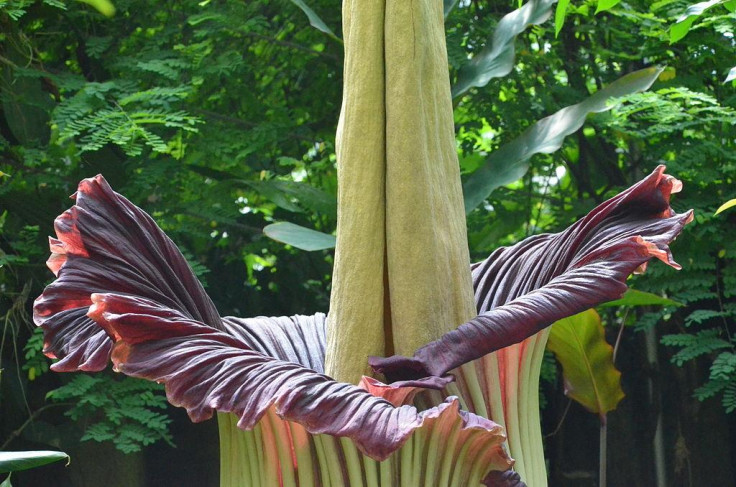Putricia Blooms: Sydney's Corpse Flower Draws Crowds Despite Overpowering Stench

A pungent aroma, reminiscent of decay, has descended upon Sydney's Royal Botanic Garden as its resident corpse flower, affectionately nicknamed Putricia, has finally bloomed.
The rare event, the first in 15 years, has drawn crowds of eager onlookers and captivated online audiences, despite the flower's infamous stench.
Putricia, whose scientific name is Amorphophallus titanum, began showing signs of its impending bloom about a week and a half ago, culminating in its full unfurling on Thursday, ABC News reported.
The greenhouse, at Sydney's Royal Botanic Garden, housing the giant flower has become a focal point, with hundreds of people, including international tourists, queuing for an encounter with Putricia. The garden has extended its opening hours until midnight to accommodate the influx of visitors.
A simple, medieval-style sign, "Putricia The Corpse Flower," marks the entrance to the greenhouse, where a steady stream of 25 visitors at a time are granted access.
The event has also garnered significant online attention, with a 24/7 livestream, titled "A Plant to Die For," attracting over 200,000 viewers prior to the bloom, while in-person attendance has already surpassed 5,000.
"I love her ... and she's a deformed penis as well, which I love," Lee, who sneaked out from work to watch Putricia a second time, said. "She's living the best life – dying in 24 hours, what a dream. Life is hard enough," reported The Guardian.
"We're obsessed with her, she's the Queen of Sydney at the moment," added Lee's friend.
Horticulturalists had been closely monitoring Putricia's progress, measuring its growth daily as it entered its flowering stage. By Tuesday, it had reached a height of 1.62 meters.
This is the fifth corpse flower to bloom at the gardens, following previous events in 2010, 2008, 2004, and a double bloom in 2006. The full unfurling process takes between three and six hours.
"We love that you love her, and we love that this is getting people into botany and horticulture," a spokesperson for the botanic gardens said, adding that staff are "thrilled by Putricia's fame."
Corpse flower: The rare and stinky wonder
The Amorphophallus titanum, also known as the Bunga Bangkai or Titan Arum, boasts the largest and smelliest flower spike in the world. Native to the West Sumatran rainforests, where fewer than 1,000 specimens are estimated to remain, the plant is considered rare and endangered. It thrives in shady, moist, and warm conditions, ideally around 22 degrees Celsius with 75% humidity.
The flower's characteristic odour, often compared to rotting flesh, wet socks, or hot cat food, is attributed to sulphur-based and putrescine odorants. The bloom occurs when the central spike, known as the spadix, experiences rapid growth, prompting the surrounding spathe, or "skirt," to open and release the pungent smell.
John Siemon, Horticulture and Living Collections Director, expressed hope for successful pollination, stating, "If we achieve a successful pollination Putricia may have up to 400 babies. We would see to distribute these to other conservation agencies that can benefit with new genetic diversity."
While blowflies and beetles act as natural pollinators in the wild, the greenhouse relies on pollen shipped from other botanic gardens.
Professor Brett Summerell, Chief Scientist at the Royal Botanic Garden, who has witnessed five corpse flower blooms in his 35-year career, described the expected peak scent as akin to a "dead possum in the roof."
After a few days, the flower will shrivel and collapse, and it may be years before Putricia blooms again.
© Copyright 2025 IBTimes AU. All rights reserved.





















